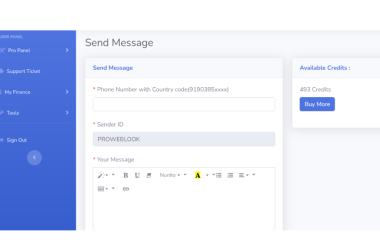Introduction: What is DNS Check?
DNS Check, also known as name resolution, is the process of mapping a human-readable domain name to its corresponding IP address. This process is essential for the functioning of the internet, as it allows users to access websites using a memorable domain name instead of having to remember a series of numbers (the IP address). The process of converting a domain name to an IP address is known as a DNS lookup.
DNS Check – How Does It Work?
DNS check works by querying a DNS server, which acts as a directory of domain names and their associated IP addresses. When a user types a domain name into their web browser, the browser first checks its local cache to see if it has the information it needs. If the information is not found in the cache, the browser sends a request to the local recursive resolver, which is responsible for resolving the domain name to an IP address.
The recursive resolver will then query the root DNS servers, which contain a list of top-level domains (TLDs), such as .com, .org, and .net. From there, the resolver will query the authoritative DNS servers for the TLD, which will provide the IP address for the specific domain name that the user requested.
Once the resolver has received the IP address, it will store it in its cache for a specified amount of time, called the Time to Live (TTL). The next time the same domain name is requested, the information can be retrieved from the cache, speeding up the resolution process.
DNS check API
For developers, there are a number of DNS Check APIs available, such as Proweblook DNS check. These APIs allow developers to integrate DNS lookup functionality into their applications, making it easy to retrieve DNS records, such as A, MX, CNAME, and TXT records, among others. With a DNS lookup API, developers can build powerful tools for diagnosing DNS issues, monitoring website performance, and much more.
DNS Record Lookup
DNS record lookup is the process of retrieving information about a specific domain name from a DNS server. This information, also known as DNS records, can include details such as the IP address associated with the domain name, the mail server (MX) records, the start of authority (SOA) record, and more.
DNS Check Tool
A DNS check tool is a software application that allows users to perform a DNS lookup for a specific domain name. These tools can be used to retrieve information about a domain name, such as its IP address, MX records, and SOA record. Some popular DNS lookup tools include the command line tool “nslookup”, as well as online web tools, such as whatsmydns.
AAAA DNS check
AAAA DNS check is a type of DNS query that is used to retrieve the IPv6 address of a domain name. IPv6 is a newer version of the internet protocol that provides a larger pool of IP addresses. An AAAA checker is performed in the same way as a regular, but it returns the IPv6 address of the domain name instead of the IPv4 address.
DNS CNAME Record Lookup
A DNS CNAME record lookup is used to retrieve the canonical name of a domain name. A CNAME record is used to associate a domain name with another domain name, allowing multiple domain names to point to the same IP address. For example, if example.com is associated with a CNAME record for example.net, a user accessing example.com will be redirected to the IP address associated with example.net
FAQ
What is the purpose of DNS Lookup?
The purpose of DNS Lookup is to convert human-readable domain names into machine-readable IP addresses, allowing devices to access websites and other internet resources.
What is the difference between a forward DNS lookup and a reverse DNS lookup?
A forward DNS lookup is the process of finding the IP address associated with a domain name, while a reverse the process of finding the domain name associated with an IP address.
Can I use an internal DNS lookup to find the IP address of a domain name?
Yes, internal DNS lookups can be used to find the IP address of a domain name within a private network.
What is an MX record lookup, and why is it important?
An MX record lookup returns the mail server for a domain name. It is important because it helps ensure that email messages are delivered to the correct server and not lost or rejected.
What is a CNAME record lookup, and why is it important?
A CNAME record lookup returns the canonical name of a domain. It is important because it allows multiple domain names to point to the same website, making it easier to manage and change website addresses.
What is a TXT record lookup, and why is it important?
A TXT record lookup returns a text string associated with a domain. It is important because it allows you to store information about the domain, such as SPF records or DKIM signatures, which are used for email security and authentication.
Can I use a DNS lookup API to retrieve information about a domain’s DNS records?
Yes, there are many DNS lookup APIs available that allow you to retrieve information about a domain’s DNS records programmatically.
What happens if a DNS lookup fails?
If a DNS lookup fails, it means that the DNS resolver is unable to find the IP address associated with a domain name. This can result in an error message in your web browser or other device.
Conclusion
In conclusion, DNS Lookup is a critical component of the internet infrastructure that allows us to connect to websites and other internet resources. It works by converting human-readable domain names into machine-readable IP addresses, which can then be used by devices to access the desired resource. Whether you’re an end-user looking to access a website, or a network administrator monitoring the performance of your domains, understanding the basics is an important part of staying connected in today’s digital world. With a wide range of tools and services available, including online DNS Lookup, , and DNS Lookup APIs, it’s easier than ever to find the information you need about your domains and ensure that they are functioning correctly.








